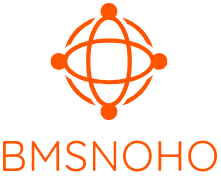Table of Contents
ToggleEver feel like you’re stuck in the same old routine, like a hamster on a wheel? The truth is, many people unknowingly cling to habits that keep them from reaching their true potential. It’s time to shake things up and discover how to break the habit of being yourself.
Overview of Breaking the Habit of Being Yourself
“Breaking the Habit of Being Yourself” presents a comprehensive method for shifting one’s mindset to unlock potential. The text explores how thoughts shape reality, emphasizing that habitual thinking can limit personal growth. It delves into neuroscience to explain how the brain creates patterns of behavior, making it essential to rewire these connections for lasting change.
Readers encounter practical tools to facilitate this transformation. Meditation serves as a key technique for cultivating self-awareness and reducing anxiety. Visualization exercises guide individuals in imagining their ideal selves, fostering motivation to embrace new habits. Moreover, the author details the importance of emotional regulation in this process, showcasing how emotions influence thoughts and actions.
Transforming oneself requires dedication and practice. The book highlights the significance of consistent effort in overcoming limiting beliefs that hold people back. By understanding the interplay between consciousness and subconsciousness, individuals can actively participate in their personal evolution.
Research findings enhance the credibility of the discussions. Studies cited throughout the text illustrate the power of intention and focus in reshaping one’s life. These insights reinforce that change is not only possible but achievable through conscious effort.
This resource also encourages readers to adopt new perspectives and challenge existing assumptions. Engaging with the material promotes an attitude of curiosity and openness, essential for breaking free from self-imposed barriers. Each reader is invited to embark on a journey of self-discovery, identifying and dismantling habits that no longer serve their highest self.
Key Concepts

Understanding personal identity plays a crucial role in breaking limiting habits. Identity shapes self-perception and influences decisions. The theory posits that individuals often remain anchored to habitual thoughts and behaviors tied to their identity. As they explore and redefine their identity, transformation becomes possible. A shift in understanding who they are fosters an environment for growth.
The power of thoughts can’t be underestimated. Thoughts form the foundation of personal reality. They shape emotional responses and drive behaviors, often on autopilot. When individuals recognize that their thoughts are not fixed, opportunities for change arise. Consistent positive thinking reinforces neural pathways that support constructive behaviors. Employing practices like meditation enhances awareness of these thought patterns, enabling individuals to redirect their focus and engage in transformative actions.
Practical Steps to Change
This section focuses on actionable methods for transformation. Individuals seeking change can implement strategies to shift their mindset effectively.
Developing Self-Awareness
Recognizing thoughts and behaviors lays the groundwork for transformation. Engaging in mindfulness practices enhances self-awareness, allowing for a clearer understanding of triggers. Journaling provides valuable insights into patterns of thinking, highlighting areas for growth. Seeking feedback from trusted friends also offers external perspectives that reveal blind spots. Meditation fosters an environment of inner reflection, nurturing a deeper connection to one’s emotions. Analyzing emotional responses leads to identifying habitual reactions, paving the way for meaningful change. Taking small but consistent steps helps build a solid foundation for self-awareness, ultimately supporting the journey of personal development.
Creating New Habits
Establishing new habits requires intention and consistency. Start by identifying specific behaviors that align with desired changes. Setting achievable goals provides clear targets to work towards, making the process manageable. Reinforcement through rewards can motivate individuals to stick to their new routines. Consistent practice solidifies changes, creating a feedback loop that supports habit formation. Tracking progress helps maintain focus and motivation, allowing for adjustments as needed. Utilizing visual cues can serve as reminders to foster new behaviors throughout daily routines. Embracing a growth mindset encourages resilience against setbacks, making long-term habit change attainable.
Resources for Further Learning
This section provides valuable resources for individuals seeking to deepen their understanding and break free from limiting habits.
Recommended Books and Materials
Books offer remarkable insights into personal transformation. “Breaking the Habit of Being Yourself” by Dr. Joe Dispenza explores the intersection of neuroscience and personal growth. “The Power of Now” by Eckhart Tolle emphasizes mindfulness and presence, helping individuals recognize their thoughts. Additionally, “Atomic Habits” by James Clear provides actionable strategies for cultivating new habits through small, consistent changes. These materials serve as excellent companions on the journey of self-discovery.
Online Courses and Workshops
Online courses enhance learning through structured frameworks. Mindvalley’s “Becoming Limitless” course focuses on unlocking potential and reframing limiting beliefs. Udemy offers various workshops on mindfulness practices, aimed at developing self-awareness and emotional intelligence. These platforms provide interactive experiences, connecting users with experts and like-minded individuals. Engaging in these courses leads to actionable insights and promotes continual growth.
Breaking the habit of being oneself opens the door to profound personal transformation. By understanding the connection between thoughts and reality, individuals can begin to reshape their identities and break free from limiting patterns. The journey requires commitment and a willingness to embrace new perspectives.
Utilizing practical tools like mindfulness and goal-setting fosters self-awareness and encourages the development of positive habits. As readers explore the resources available, they’ll find valuable insights that support their growth.
Ultimately, the path to self-discovery is unique for each person. With dedication and the right mindset, anyone can unlock their potential and create a life that aligns with their true self.







